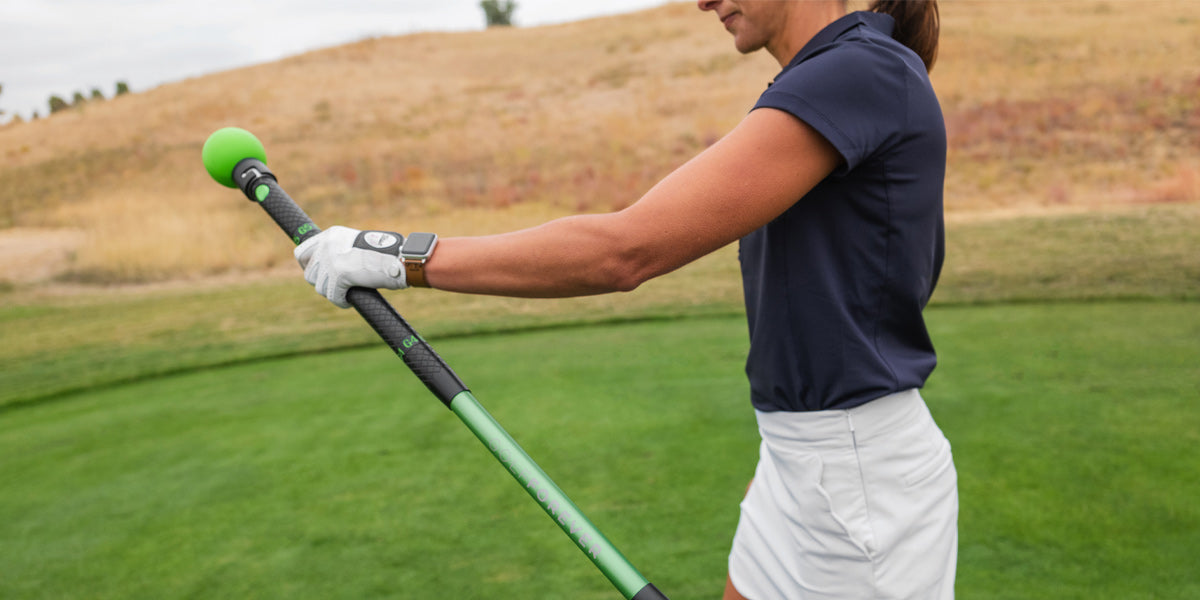It seems like every sport’s got an elbow problem—baseball elbow, tennis elbow, golfer’s elbow. Are these just excuses to whine about aging while pretending it’s tied to something athletic?
Sometimes, sure—but most of the time, these ailments are legit. They might start on the course, but they can turn into pain that sticks around long after the final putt drops.
Fortunately, you’re not doomed to fret over your elbow forever. A few simple exercises can help you prevent the pain.
What Is Golfer’s Elbow—and How Do You Get It?
Golfer’s Elbow is officially called medial epicondylitis. Don’t worry, you don’t have to remember that. It’s a condition that causes pain in the inner elbow, sometimes shooting down the forearm into the wrist. It flares up when you’re gripping or rotating something, like a golf club, at high frequency or too hard.
Many people blame Golfer’s Elbow on poor swing form. But more often, it comes down to weak and tight forearm muscles. That’s right—skipping exercises for the small yet important forearm and wrist muscles has finally caught up to you.
On the course, it can wreck your game. You’ll struggle to grip the club consistently and slow your swing, anticipating pain at impact. The only thing worse than a bad round is a bad round with a throbbing elbow.
How Do You Prevent It?
The secret to preventing Golfer’s Elbow is a strong wrist and forearm.
There doesn’t have to be any heavy weightlifting in your future. With a few targeted exercises, you can just focus on building strength and flexibility in your forearm’s primary muscles. That’ll ease the pain in your grip and allow you to keep your swing speed up more consistently.
Here are three exercises to keep your elbow pain-free and your game sharp.
The following exercises use GolfForever’s Swing Trainer, an at-home golf workout tool and swing-weighted warmup club designed to boost mobility in key muscle groups. Don’t have the Swing Trainer? No problem—you can use an iron or wedge from your bag.
Wrist Flexion and Extension
Hold the Swing Trainer palm down in the center of the green zone.
Straighten the elbow and extend the arm out in front of you, shoulder height, palm down.
Lift the wrist, pulling it up and back, and then slowly lower it in the opposite direction.
If you experience pain with this exercise, limit your motion, or bend the elbow so your arm is at your side.
Wrist Ulnar and Radial Deviation
Hold the Swing Trainer at G4 (easier) or G2 (harder).
Straighten the elbow and extend the arm out in front of you at shoulder height, palm facing inward, and ball facing up.
Moving from the wrist, point the swing trainer down and forward and then pull it up and back.
If you experience pain with this exercise, limit your motion. Or, lower the elevation of the arm.
Forearm Pronation/Supination
Hold the Swing Trainer palm down in the center of the green zone at shoulder height.
Straighten the elbow and extend the arm out in front of you, palm down.
Slowly turn the palm up and then rotate the palm down, keeping the shoulder neutral.
If you experience pain with this exercise, limit your motion. Or, bend the elbow so your arm is at your side.
What If You Already Have Golfer’s Elbow?
If you’re already feeling pain, hold off on exercises for now. Exercise might be the long-term fix, but in the short term, it can make things worse. The first step is rest. You need to give the area a break so the inflammation—and the pain—can settle down. For your elbow to heal, that inflammation needs to go.
Unfortunately, this means avoiding the activities causing it for a while—usually a few weeks. And yes, that probably includes swinging a golf club.
Once the acute pain subsides, the real work begins: strengthening your elbow with GolfForever to keep Golfer’s Elbow from coming back.
Stay Healthy & Pain-Free with GolfForever
Even with the right exercises, managing pain on your own can be tough.
That’s where GolfForever’s App and Swing Trainer come in. Start with an assessment to unlock your customized program and gain access to a treasure trove of injury prevention tips and exercises in the GolfForever Library, targeting your wrist, elbow, and rotator cuff muscles.
Don’t let a little elbow pain sideline your game. These problems are fixable—you just need a place to start.

